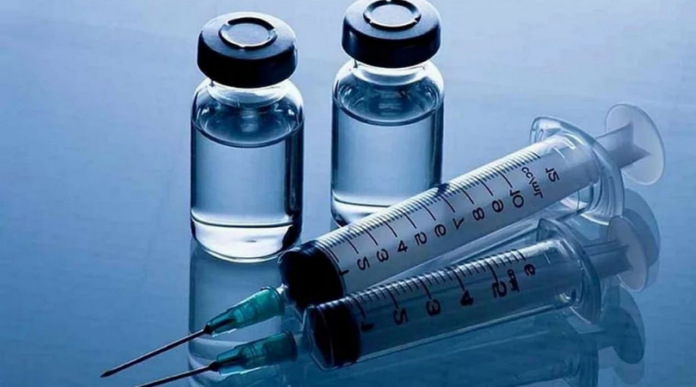By Dr. Gyan Pathak
Corbevax, the vaccine for COVID-19, is a new hope. It is cheapest, and hence, most affordable, paving the way for an equitable supply of the same to the have-nots of the world. When it headed from the USA to India, newspapers like the Washington Post (USA), and the Guardian (UK) carried articles.
Now it has been approved by India at the fag-end of December for emergency use, and the Hyderabad-based Indian Company Biological-E would produce it. It is here India has a big role to play without caring for the profit-making lobbies who might not want such a cheap option, made available to the people. A fair and affordable vaccine to all across the world must be secured now since it may rescue the world.
India has ordered 300 million doses after giving emergency use approval and India’s Biologica-E will produce 100 million doses a month. Our country may play a greater role in rescuing the world by producing and supplying the same at an affordable price, which presently costs only about $1.50 per dose, Rs 112 in Indian currency.
According to the latest information on the public domain, the Government of India was spending Rs 225 per dose for Covaxin, and Rs 215 for Covishield per dose. The cost of Pfizer and Moderna’s vaccines is anything between $16 per dose (Rs 1,190) to $20 (Rs 1,487) per dose, depending on the quantity of purchase. Due to such an exorbitant cost, the COVID-19 vaccines could reach the poor countries only in negligible quantities, while the richer countries are now providing booster doses for their population.
Biological-E is a protein subunit vaccine. It was developed by two Texas-based scientists Peter Hotez and Maria Elena Bottazzi, with almost little help from the big people or governments of the world, or even from the World Health Organisation (WHO) of the United Nations that has been lamenting inequitable supply to poorer nations, serving the warning – if anyone anywhere is unsafe, everyone everywhere is unsafe. They developed their vaccine with minimal help from the US government. Rather, only $7 million came from private investors, and one of the big early investors was Austin-based Tito’s Vodka, which donated $1 million in May 2020.
This low-cost vaccine is now made available to the world, patent-free travels with ease and does not require deep refrigeration, which makes it easy to reach even the remote and undeveloped corners of the globe.
Biological-E has said that the vaccine will provide ‘sustainable’ access to low-and-middle-income countries. The beauty of the India vaccines is that the company has produced the country’s first locally developed COVID-19 vaccine in partnership with the Texas Children’s Hospital Centre for Vaccine Development, Baylor College of Medicine.
Having already produced over 150 million doses, the company would produce 100 million doses each month, beginning in February. It expects to produce about one billion doses by the end of 2022. “The vaccine will be effective both in scale and affordability, providing sustainable access to low- and middle-income countries,” the company has said.
The development process of Corbevax involves yeast and the coronavirus spike protein – the patent less formula was shared by Hotez and Bottazzi, making it possible for the Biological-E to produce the recombinant protein subunit vaccine.
The Texas-based scientists headed to India, expecting nothing. When the pandemic offered an opportunity for the vaccine developers to earn billions of dollars in profit, the scientists offered the vaccines to the world with no intention of earning money.
“We’re not trying to make money. We just want to see people get vaccinated,” Hotez said to the Washington Post.
This “second generation” coronavirus vaccine has been licensed to Biological-E through a commercialization team at Houston-based Baylor College of Medicine, where both the scientists who developed the vaccine, work. They personally won’t get a penny from it, but their employer will get a small fee. The development of this vaccine resulted from the ambition to create a low-cost, open-source alternative to expensive and limited-supply mRNA vaccines for developing and under-vaccinated countries.
Both the scientists have shared their knowledge and know-how with India, but it won’t stop here, because they are talking to other manufacturers around the world and have even consulted with the WHO.
India, and the WHO, must now carry forward the mission of these two scientists in achieving a hundred per cent inoculation of the people of the world. It would be easier for manufacturers all over the world to produce their own versions of this vaccine since it uses older recombinant protein technology that has already been in use by several vaccine producers, rather than newer and potentially more complicated modern technology. Therefore, both must rise to the occasion to rescue the world.
India needs this vaccine not for its own people but for everyone, as underlined in the ancient philosophy of this country, Vasudhaiva Kutumbakam (all the people of the world are our own).
As of January 18, 2021, only 52 per cent of the world population was fully vaccinated, according to the New York Times tracker. About 62 per cent population of the world has received at least one dose.
There is an enormous gap between the rich and the poor countries. While in the US and Canada, 76 per cent of people have got at least one dose, in Africa, it is just 14.5 per cent. Asia-Pacific and Latin America have seen 72 per cent of the population receive one dose, while in Europe and the Middle East, these are 66 and 52 per cent, respectively. There are many countries where it is just between 1-5 per cent of their population. (IPA Service)


